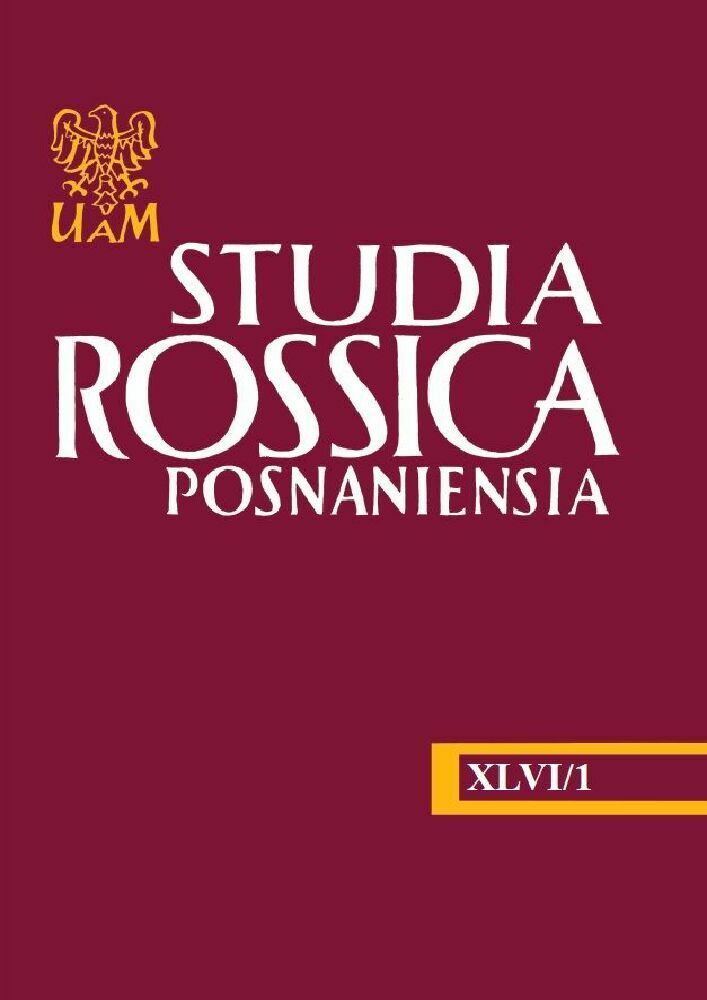Abstrakt
Bearing in mind the prime principle of audiovisual integration in human communication (Seeber 2012, 2017), the author discusses the empirical aspects of the correlation between nonverbal communication and simultaneous interpreting. Having established that kinesics and prosody indeed can have a positive impact on understanding one’s message, he conducts an experiment in which he compares the quality of the interpretations performed by MA students of English and Russian philology divided into audio and audio-visual groups in the case of English-Polish and Russian-Polish simultaneous interpreting. He focuses specifically on two categories of gestures – illustrators and emblems. Ultimately, he discovers a tangible relation between having the ability to see the speaker and the accuracy of interpreting the speaker’s speech. However, the limitations of the experiment do not allow for making universal conclusions on the basis of its results, as it should become operationalised and replicated.
Bibliografia
Anderson, Linda. „Simultaneous interpretation: Contextual and translation aspects”. Bridging the gap: Empirical research in simultaneous interpretation. Red. Sylvie Lambert, Barbara Moser-Mercer. Amsterdam, John Benjamins Publishing Company, 1994, s. 101–120.
Balzani, Maurizio. „Le contact visuel en interpretation simultanée: resultats d’une expérience (Français–Italien)”. Aspects of applied and experimental research on conference interpretation. Red. Laura Gran, Christopher Taylor. Udine, Campanotte Editore, 1990, s. 93–100.
Bartłomiejczyk, Magdalena. „Effects of short intensive practice on interpreter trainees’ performance”. Why translation studies matters. Red. Daniel Gile, Gyde Hansen, Nile K. Pokorn. Amsterdam, John Benjamins Publishing Company, 2010, s. 183–194.
Bühler, Hildegund. „Conference interpreting: A multichannel communication phenomenon”. Meta: Translators’ Journal, 30 (1), 1985, s. 49–54.
Burgoon, Judee K., Aaron Bacue. „Nonverbal communication skills”. The handbook of communication and social interaction skills. Red. John O. Greene, Brant R. Burleson. Mahwah, Lawrence Erlbaum Associates Publishers, 2003, s. 179–219.
Ekman, Paul. „Emotional and conversational nonverbal signals”. Language, knowledge, and representation. Red. Jesús M. Larrazabal, Luis A. Perez Miranda. Dordrecht, Springer Science+Business Media, 2004, s. 39–50.
Ekman, Paul, Wallace V. Friesen. „The repertoire of nonverbal behavior: Categories, origins, usage, and coding”. Semiotica, 1 (1), 1969, s. 49–98.
Fujishin, Randy. „Creating effective groups: The art of small group communication”. Plymouth, Rowman & Littlefield Publishers, 2007.
Galvão, Elena Z. „Speech and gesture in the booth – A descriptive approach to multimodality in simultaneous interpreting”. Translation and the (Trans)formation of Identities. Selected Papers of the CETRA Research Seminar in Translation Studies 2008. Red. Dries De Crom. 2009. Web. 14.11.2020. http://www.arts.kuleuven.be/cetra/papers/files/galvao.pdf.
Grabowski, Joachim. „The writing superiority effect in the verbal recall of knowledge: Sources and determinants”. Writing and cognition. Red. Mark Torrance, Luuk van Waes, David Galbraith. Bingley, Brill, 2007, s. 163–179.
Jesse Alexandra et al. „The processing of information from multiple sources in simultaneous interpreting”. Interpreting, 5 (2), 2000/2001, s. 95–115.
Moser-Mercer, Barbara. „Remote interpreting: Issues of multi-sensory integration in a multilingual task”. Meta: Translators’ Journal, 50 (2), 2005, s. 727–738.
Mouzorakis, Panayotis. „That feeling of being there: Vision and presence in remote interpreting”. Web. 14.11.2020. https://www.academia.edu/25852376/That_feeling_of_being_there_Vision_and_presence_in_remote_interpreting.
Osika, Grażyna. „Komunikacja niewerbalna”. Zeszyty Naukowe Politechniki Śląskiej. Seria: Organizacja i Zarządzanie, 43, 2008, s. 111–128.
Rachut, Konrad. „Komunikacja niewerbalna a tłumaczenie symultaniczne: Aspekt teoretyczny”. Acta Neophilologica, 21 (2), 2019, s. 65–75.
Rennert, Sylvi. „Visual input in simultaneous interpreting”. Meta: Translators’ Journal, 53 (1), 2008, s. 204–217.
Seeber, Kilian G. „Multimodal input in simultaneous interpreting: An eye-tracking experiment”. Translation Studies: Old and new types of translation in theory and practice. Proceedings of the 1st International Conference TRANSLATA. Translation & interpreting research: Yesterday? Today? Tomorrow. Red. Lew Zybatow, Alena Petrova, Michael Ustaszewski. Frankfurt am Main, Peter Lang, 2012. Web. 14.11.2020. https://archive-ouverte.unige.ch/unige:97482.
Seeber, Kilian G. „Multimodal processing in simultaneous interpreting”. The Handbook of Translation and Cognition. Red. John W. Schwieter, Aline Ferreira. Hoboken, John Wiley & Sons, Inc., 2017, s. 461–475.
Sternberg, Robert. Cognitive psychology. Belmont, Wadsworth Publishing, 2011.
Verderber, Rudolph, Kathleen Verderber, Dean Sellnow. COMM. Wadsworth, Cengage Learning, 2009.
Licencja
PRACE PUBLIKOWANE W CZASOPIŚMIE DOSTĘPNE SĄ NA LICENCJI CREATIVE COMMONS:
Uznanie autorstwa-Użycie niekomercyjne-Na tych samych warunkach 4.0 Międzynarodowe.
Autorzy tekstów przyjętych do publikacji w czasopiśmie „Studia Rossica Posnaniensia” są zobowiązani do wypełnienia, podpisania i odesłania na adres redakcji umowy o udzielenie nieodpłatnej licencji do utworów, z zobowiązaniem do udzielania sublicencji Creative Commons.
Zgodnie z umową, autorzy tekstów opublikowanych w czasopiśmie “Studia Rossica Posnaniensia” udzielają Uniwersytetowi im. Adama Mickiewicza w Poznaniu niewyłącznej i nieodpłatnej licencji oraz zezwalają na użycie sublicencji Attribution-NonCommercial-ShareAlike 4.0 International (CC BY-NC-SA 4.0).
Autorzy zachowują prawa do dalszego, swobodnego rozporządzania utworem.
Autorzy, którzy wykorzystują w swoim tekście cudze utwory (np. ilustracje, fotografie) proszeni są o dostarczenie do redakcji czasopisma zgody na publikację.
Użytkownicy internetu uprawnieni są do korzystania z utworów opublikowanych po 2015 roku “Studia Rossica Posnaniensia” tylko w celach niekomercyjnych, pod następującymi warunkami:
https://creativecommons.org/licenses/by-nc-sa/4.0/
Uniwersytet im. Adama Mickiewicza w Poznaniu zachowuje prawo do czasopisma jako całości (układ, forma graficzna, tytuł, projekt okładki, logo itp.).

